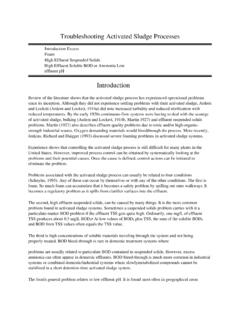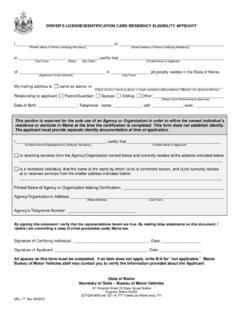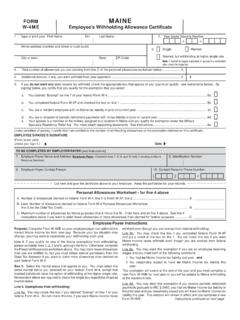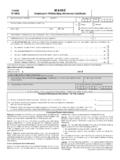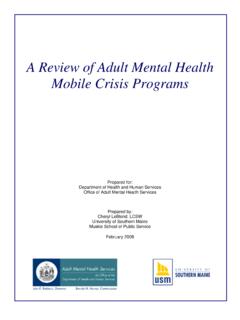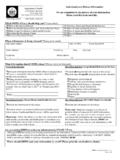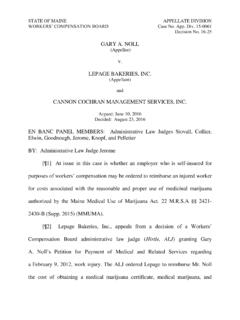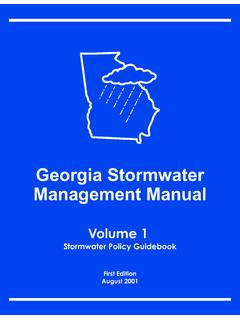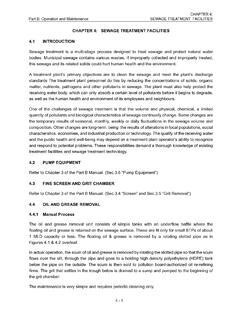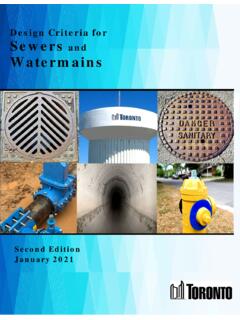Transcription of MAINE EROSION AND SEDIMENT CONTROL BEST …
1 MAINE EROSION AND SEDIMENT CONTROL BMPs 10/2016 October 2016 MAINE EROSION AND SEDIMENT CONTROL best MANAGEMENT PRACTICES (BMPs) Manual for Designers and Engineers MAINE DEPARTMENT OF ENVIRONMENTAL PROTECTION 17 State House Station | Augusta, MAINE 04333-0017 MAINE EROSION AND SEDIMENT CONTROL BMPs 10/2016 ACKNOWLEDGEMENTS Production: 2016 Revision: Marianne Hubert, Senior Environmental Engineer, Division of Environmental Assessment, Bureau of Water Quality, MAINE Department of Environmental Protection (DEP). Illustrations: Photos were obtained from SJR Engineering Inc.
2 , Shaw Brothers Construction Inc., Bar Mills Ecological, MAINE Department of Transportation (DOT), MAINE Land Use Planning Commission (LUPC) and MAINE DEP. Technical Review: The following people participated in the revision of this manual: Steve Roberge, SJR Engineering, Inc., Augusta Ross Cudlitz, Engineering Assistance & Design, Inc., Yarmouth Susan Shaller, Bar Mills Ecological, Buxton David Roque, Department of Agriculture, Conservation & Forestry Peter Newkirk, MAINE DOT Bob Berry, Main-Land Development Consultants Daniel Shaw, Shaw Brothers Construction Peter Hanrahan, Prescott William Noble, William Laflamme, David Waddell, Kenneth Libbey, Ben Viola, Jared Woolston, and Kerem Gungor of the MAINE DEP Revision (2003): The manual was revised and reorganized with illustrations (original manual, Salix, Applied Earthcare and Ross Cudlitz, Engineering Assistance & Design, Inc.)
3 Original (1991): The original document was funded from a US Environmental Protection Agency Federal Clean Water Act grant to the MAINE Department of Environmental Protection, Non-Point Source Pollution Program and developed under contract by the Cumberland County Soil and Water Conservation District. i MAINE EROSION AND SEDIMENT CONTROL BMPs 10/2016 TABLE OF CONTENTS INTRODUCTION .. 1 THE EROSION AND SEDIMENT CONTROL plan .. 3 A. SITE DEVELOPMENT .. 6 1. DUST CONTROL .. 7 2. CONSTRUCTION ENTRANCE / EXIT .. 8 3. OVERWINTER CONSTRUCTION .. 9 4. WATER DIVERSION .. 11 5. EXCAVATION DEWATERING .. 13 6. CONCRETE WASHOUTS .. 14 7. STOCKPILES.
4 15 8. DEWATERING AND OFFSITE DISPOSAL .. 16 9. TEMPORARY ROADS AND LAYDOWN YARDS .. 18 B. SEDIMENT CONTROLS ..21 1. SILT 23 2. EROSION CONTROL MIX BERM .. 24 3. FILTER SOCKS .. 25 4. STONE CHECK DAMS .. 26 5. STORM DRAIN INLET PROTECTION .. 27 6. HAY BALES .. 28 C. SEDIMENT CONTAINMENT ..29 1. SEDIMENT TRAPS .. 30 2. SEDIMENT BASINS .. 31 3. GEOTEXTILE FILTER BAG .. 38 4. FLOCCULANTS (POLYMERS) .. 39 D. MULCHING ..40 1. HAY/STRAW MULCH .. 42 2. EROSION CONTROL BLANKETS .. 43 3. EROSION CONTROL MIX .. 45 4. HYDRAULIC MULCH .. 46 E. VEGETATION ..47 1. TOPSOIL .. 49 2. SEEDBED PREPARATION .. 50 ii MAINE EROSION AND SEDIMENT CONTROL BMPs 10/2016 3.
5 VEGETATION APPLICATION .. 51 4. SODDING .. 53 5. HYDROSEEDING .. 54 F. SLOPES ..55 1. CUTS AND FILLS .. 57 2. GEOTEXTILES .. 58 3. RIPRAP PROTECTION .. 59 4. GABIONS .. 62 5. TURF-REINFORCED MATTING (TRM) .. 64 6. CELLULAR CONFINEMENT SYSTEMS .. 65 7. SLOPE DRAINS .. 66 G. SWALES AND DITCHES ..68 1. VEGETATED CHANNELS .. 70 2. RIPRAP CHANNEL .. 72 3. TURF REINFORCEMENT MAT .. 74 4. LEVEL SPREADERS .. 75 H. CROSS CULVERTS ..77 1. PIPE INLET PROTECTION .. 79 2. PIPE OUTLET PROTECTION .. 80 I. ROADS ..82 1. GRAVEL ROADS .. 83 2. DITCH TURNOUTS .. 84 3. FRENCH DRAINS AND ROCK SANDWICHES .. 86 J. STREAM CROSSINGS ..87 1. CULVERT CROSSINGS .. 88 2. TEMPORARY STREAM DIVERSION.
6 91 3. IN-WATER WORK .. 94 4. TEMPORARY STREAM CROSSINGS .. 95 K. SITE SPECIFIC BMPs ..98 1. SLOPE AND SHORELINE STABILIZATION .. 99 2. BUFFERS .. 102 3. STREAM BIOENGINEERING .. 105 4. SAND DUNE AND TIDAL BANK RESTORATION .. 107 5. GRAVEL PIT RECLAMATION .. 113 iii MAINE EROSION AND SEDIMENT CONTROL BMPs 10/2016 APPENDIX A. EROSION AND SEDIMENT CONTROL LAWS .. 114 APPENDIX B. MAINE DEPARTMENT OF TRANSPORTATION - STANDARD SPECIFICATIONS .. 116 APPENDIX C. HYDROLOGIC SOIL GROUPS AND SOIL INFORMATION .. 117 APPENDIX D. INSPECTION CHECKLIST, FREQUENCY AND REPORTING FORM .. 122 1 MAINE EROSION AND SEDIMENT CONTROL BMPs 10/2016 INTRODUCTION Contaminants, nutrients such as phosphorus, attached to soil particles contribute to non-point source pollution.
7 The environmental impact of EROSION and sedimentation can be irreparable; and planning for and preventing EROSION in the first place can be less costly than labor intensive repairs later. The purpose of this handbook is to help land developers, consultants, and contractors use the appropriate EROSION and sedimentation CONTROL best Management Practices (BMPs) for the site and conditions whenever disturbing soil or removing a natural ground cover. Large-scale development areas exposed to EROSION during construction have the greatest potential for significant sedimentation of a resource. But, a small discharge of turbid water from a simple residential lot development can also have damaging effects.
8 WHAT ARE EROSION AND sedimentation ? Soil EROSION is the detachment of soil particles and loss of surficial soil by the actions of water, ice, gravity, or wind. Water-generated EROSION causes the most severe damage to a site under development. sedimentation is the consequence of EROSION when the eroded soil particles are deposited in a new location. HOW DOES EROSION OCCUR? Because the rate of EROSION compounds exponentially, it is vital to CONTROL its initial stages. Raindrop EROSION occurs when rain falls and dislodges individual soil particles from an unprotected soil surface. These particles can be easily picked up and transported great distances by stormwater runoff.
9 Sheet EROSION occurs when the runoff removes a whole layer of an unprotected soil surface. Rill and gully EROSION occurs as the runoff concentrates in rivulets and cuts into the soil surface. When not repaired, the rills develop into larger gullies. Stream and channel EROSION occurs as the increased volume and velocity of the runoff reaches a stream or waterway and cuts away at the banks of the channel. OTHER FACTORS LINKED TO EROSION EROSION potential is directly related to the soil's capacity to hold and transfer water such as: Soils with good structure are less prone to EROSION ; but soil compaction like soil disturbance may destroy the soil structure, and increase EROSION and runoff potential.
10 A soil with high amounts of silt or very fine sand is more erodible than a soil with a higher percentage of clay or organic matter. Well-drained and well-graded gravels with little or no silt are the least erodible soils. A ground surface that is well vegetated is shielded from the impact of falling rain and will resist the velocity of runoff. Also, the root systems hold the soil particles and aid in absorbing water. Pavement or a gravel base is also considered a proper cover. Slope length and gradient will determine the velocity of the runoff and the extent of EROSION . Steep and/or long slopes are the most subject to EROSION . The intensity and duration of a rainfall event determines the volume and velocity of runoff and therefore its energy in detaching and transporting soil particles.
